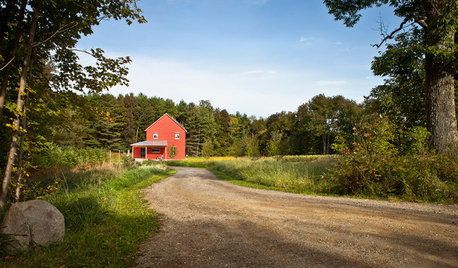Off Subject - Reminder Pant Milkweed for endangered Monarch
joeinmo 6b-7a
9 years ago
Related Stories

GARDENING FOR BUTTERFLIESBe a Butterfly Savior — Garden for the Monarchs
Keep hope, beauty and kindness alive in the landscape by providing a refuge for these threatened enchanters
Full Story
GARDENING FOR BUTTERFLIESGardening for the Bees, and Why It’s a Good Thing
When you discover how hard bees work for our food supply, you may never garden without them in mind again
Full Story
HEALTHY HOMEDetox Your Kitchen for the Healthiest Cooking
Maybe you buy organic or even grow your own. But if your kitchen is toxic, you're only halfway to healthy
Full Story
GARDENING GUIDESAttract Hummingbirds and Bees With These Beautiful Summer Flowers
Roll out a welcome mat for pollinators to keep your landscape in balance and thriving
Full Story
FARM YOUR YARDHello, Honey: Beekeeping Anywhere for Fun, Food and Good Deeds
We need pollinators, and they increasingly need us too. Here, why and how to be a bee friend
Full Story
GARDENING GUIDESLessons in the Rewards of Selfless Gardening
Let go of gardening for your own vision and watch the garden’s own true vision come forth
Full Story
GARDENING GUIDESBackyard Birds: Invite Entertaining Hummingbirds Into Your Garden
Hummingbirds — unique to the Americas — zip through open landscapes seasonally or year-round. Here’s how to attract them
Full Story
THE ART OF ARCHITECTUREFinding the Perfect Home for a New House
Sun, soil, water, topography and more offer important cues to siting your house on the land
Full Story
GROUND COVERSGive Your Lawn a Taste of the Wild
Consider the joys of an irregularly trimmed meadow lawn: It’s ecofriendly, visually interesting and still good for romping
Full Story
LAUNDRY ROOMSTop 10 Trending Laundry Room Ideas on Houzz
Of all the laundry room photos uploaded to Houzz so far in 2016, these are the most popular. See why
Full Story






bengz6westmd
brit5467
Related Professionals
Windham Landscape Architects & Landscape Designers · Kapaa Landscape Architects & Landscape Designers · Bristol Landscape Contractors · Chattanooga Landscape Contractors · Eagle Landscape Contractors · Longview Landscape Contractors · Maywood Landscape Contractors · Miller Place Landscape Contractors · Camp Springs Siding & Exteriors · San Bernardino Siding & Exteriors · Cave Spring Decks, Patios & Outdoor Enclosures · Shorewood Decks, Patios & Outdoor Enclosures · Adrian Decks, Patios & Outdoor Enclosures · Auburn Decks, Patios & Outdoor Enclosures · Hendersonville Decks, Patios & Outdoor EnclosuresIris GW
sam_md
ken_adrian Adrian MI cold Z5
joeinmo 6b-7aOriginal Author
Iris GW
bengz6westmd
brit5467
sam_md
blakrab Centex
KC Clark - Zone 2012-6a OH
davidrt28 (zone 7)
bengz6westmd
KC Clark - Zone 2012-6a OH
davidrt28 (zone 7)
sam_md